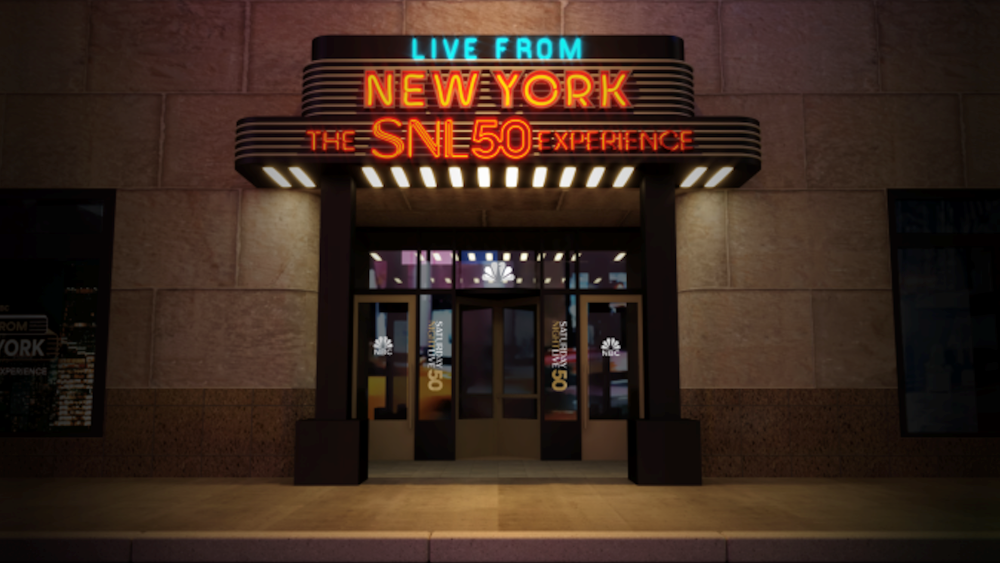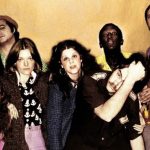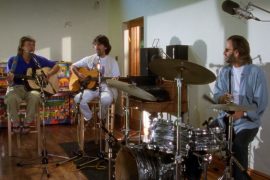
This weekend, Saturday Night Live celebrates a half century of laughs with SNL50: The Anniversary Sprecial (NBC, Peacock+,Global, STACKTV). The three hour tribute follows a re-broadcast this Saturday night at 11:30 p.m. of the very first episode of the series. Hosted by George Carlin, that premiered Oct. 11, 1975.
Twenty five years ago, in 1999, I was in Pasadena, Ca., as part of a packed banquet room full or reporters covering a Television Critics Association press tour. NBC had gathered executive producer Lorne Michaels and that year’s cast members Jimmy Fallon, Will Ferrell, Darrell Hammond, Chris Kattan, Tim Meadows, Tracy Morgan, Cheri Oteri, Chris Parnell, Colin Quinn, Horatio Sanz and Molly Shannon to talk about the series hitting the quarter century mark.
Michaels, looking dapper in his ever-present suit and tie, told us at the time that Saturday Night Live, “is a show that’s never going to get made again.” He felt mounting a similar show in the future would be prohibited.
“It has a band and sets and we’re enormously expensive,” said Michaels. He felt that “there won’t be another show like it because its roots are in a kind of television that isn’t made anymore.”
Back in 1999, Mad TV and Howard Stern (Whose TV recap of his radio show, On The Air ran on E! from 1994-2005) were similar shows which eventually went off the air. Nothing as elaborate as SNL has been attempted in late night since.
Comedy writer Rosie Shuster was married to Michaels when Saturday Night Live launched. As she discusses on this week’s episode of brioux.tv: the podcast, she shares Michaels’ view that SNL’s roots date back to old-fashioned and expensive network variety shows. The one she singles out is the one her dad Frank Shuster appeared on, with his comedy partner Johnny Wayne, every six weeks or so: The Ed Sullivan Show (1948-1971).
advertisement
Still, SNL was also the show that broke away from what came before. It was, as Michaels has long maintained, “a show for the generation that grew up on television. For the Baby Boom generation, it was one of the first shows they got to do for themselves.”
The Toronto native, now 80, has long feared that the word “uneven” would appear on his tombstone. At the time of the 1999 press conference, he was still smarting from reeviews from five years earlier, writing them off as “a shift in generations. He noted that some of the most vilified performers, including Chris Rock and Adam Sandler, wentr on to become among the hottest names in Hollywood.
That quarter century cast literally grew up with the show. Cheri Oteri remembered doing SNL shtick in high school. Jimmy Fallon told reporters that he and his sisters used to lip-synch SNL sketches for their parents.
“We’d do the Czech brothers or lip-synch to King Tut,” said Fallon, now into his eleventh season as host of NBC’s The Tonight Show.
Colin Quinn’s favourite early SNL memory was seeing Bill Murray as Nick the Lounge Singer. “Just the way he pulled it off, he had a different energy than anybody I’d ever seen,” said Quinn. “He was in his own world, doing his own thing.
“A friend of mine said it’s like gambling or going to Las Vegas,” Quinn said of the TV audience’s apparent addiction to the series. “Even if you didn’t like the last sketch, the next sketch could be great. And that’s how it’s been from year to year, too. It’s always got hope because it’s live.
“The power of Saturday Night was that people could talk about it the following day and they’d all have the same experience,” aded Quinn. That is still true, 25 years later, although that is mainly due to Tik Tok, Instagram and YouTube, as well as other digital sources. More and more viewers no longer watch “live,” but catch up with the previous night’s sketches on their phones over breakfast the next morning.
“I think as long as that remains something Americans do, I think we’ll be on the air,” said Michaels. Clearly, 25 years later, watching Saturday Night Live continues to connect with views of several generations.






